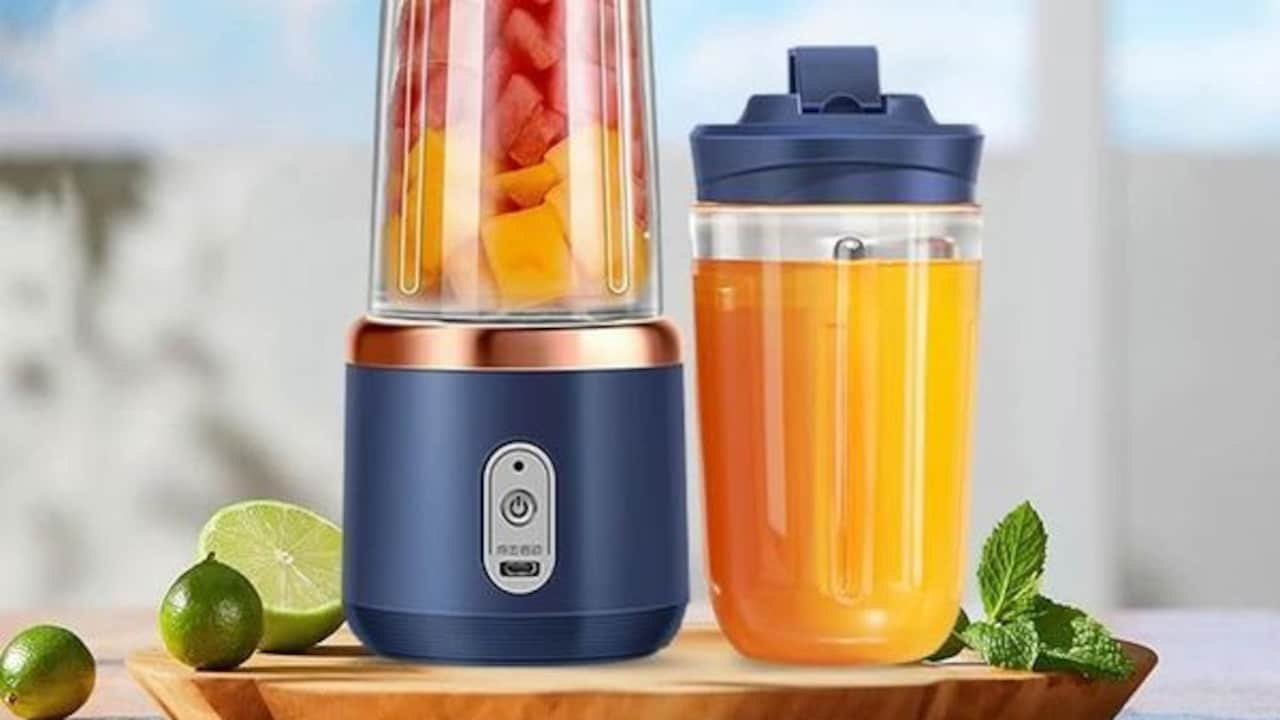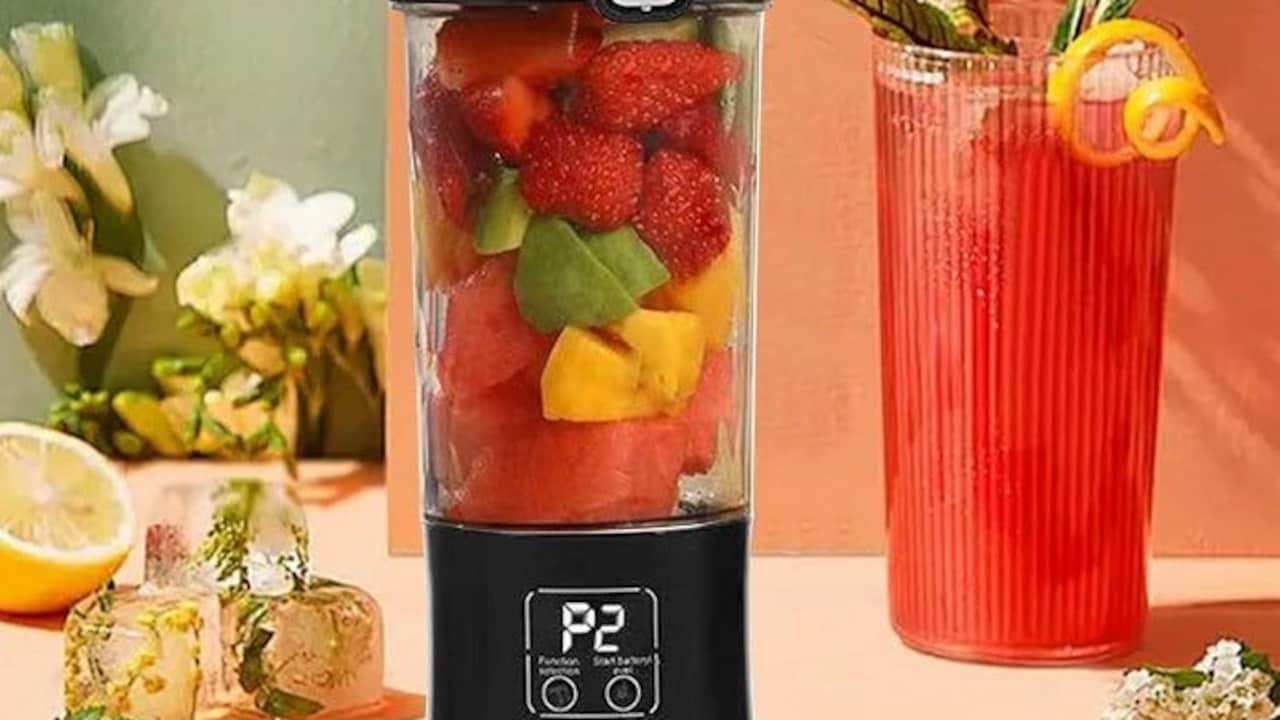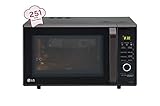How To Select The Right Portable Juicer For Daily Use: Motor, Capacity And Battery Explained
A portable juicer promises fresh juice on busy mornings, post-gym breaks, road trips, office hours and even those long train journeys. Yet, choosing the right one feels tricky. This guide breaks down how to pick a juicer that suits your lifestyle.

How To Choose A Portable Juicer Based On Motor, Capacity And Battery.
The rise of portable juicers has changed the way many people enjoy fresh drinks. No one needs a bulky mixer-grinder or a full kitchen setup for a quick fruit fix anymore. These compact devices slip into bags, charge like smartphones, and turn everyday fruits into bright, refreshing blends within seconds.
But with so many models flooding online stores, confusion creeps in. One advertises a “powerful motor”, another claims “long battery life”, and a third one boasts “large capacity”. The challenge lies in decoding these buzzwords and matching them with real-life needs.
This guide explores how to choose a reliable portable juicer based on motor power, jar capacity, and battery performance, without drowning you in technical jargon. Expect relatable examples, a few smiles, and practical advice that makes your purchase simple and stress-free.

How To Choose A Portable Juicer Based On Motor, Capacity, And Battery; Photo Credit: Pexels
What To Look For When Choosing a Portable Juicer
1. Understanding Motor Power: Why Wattage Matters
A portable juicer stands or falls on its motor. Many people focus on design or colour first, only to realise later that the device struggles with tougher fruits. Motor power, usually listed in watts, decides how efficiently the juicer blends. Higher wattage often means more strength. A juicer with a 40–50W motor handles soft fruits like watermelon or papaya with ease. Step into the 60–150W range and the device starts crushing ice, nuts and fibrous fruits.
A motor that runs too weakly overheats or gives uneven blends. No one wants chunky banana bits floating in a juice that should taste smooth. Strong motors save time and support regular use. Think of a busy morning before office hours when a minute feels precious. A powerful motor makes sure your drink blends without fuss.
When choosing your portable juicer, look at wattage before features like LED lights or fancy lids. A good motor sits at the heart of convenience, consistency and long-term durability.
2. Blade Quality: A Silent Partner in Performance
Even the best motor struggles without strong blades. Blades decide how well fruits break down and how smooth your final drink feels. Stainless steel blades, especially 304-grade, resist rust and maintain sharpness. They also handle heat better. Many modern juicers add four-leaf or six-leaf blade structures that move ingredients more efficiently.
Imagine blending mango pulp during peak summer. Soft fruit seems effortless to crush, yet stringy fibres can cling to blunt blades. Sharp, angled blades cut through fibres cleanly, producing lump-free juice. If you enjoy cold coffee, smoothies or shakes, multi-point blades make a big difference.
Some portable juicers add serrated edges for stubborn ingredients. They grind ice cubes or frozen fruit chunks with ease. When browsing models online, check photos showing blade shape. Look for thick, well-fitted bases that prevent wobbling. A sturdy blade assembly means less noise, faster blending and fewer spills. It may look like a small part, but blades shape the entire juicing experience.
Also Read: Fuel Your Mornings: Top 5 Portable Juicers Under ₹1500 for Quick, Healthy Sips
3. Battery Life: How Long Should It Last?
A portable juicer becomes truly “portable” only when its battery lasts long enough. Many users charge their device before leaving home and rely on it throughout the day. Average models offer one to four cups per charge, while stronger devices go up to eight or ten cups. For travel, office or gym use, longer battery life reduces dependence on power sockets.
A 2000mAh battery handles casual use; daily users often prefer 4000mAh or more. Charging time also matters. No one enjoys waiting three hours for a single glass of juice. Some juicers now support fast charging via Type-C, the same cable used for phones. This feature makes life simpler, especially when packing light.
Think of moments like a long train ride or a road trip during summer. Fresh juice feels refreshing, but only if the device wakes up without complaints. Reliable battery life ensures your juicer doesn't turn into a fancy paperweight halfway through the journey. Choose a battery capacity that suits your routine, not just the brochure claims.
4. Jar Capacity: Choosing the Right Size for Your Lifestyle
Portable juicers come in various sizes, typically between 300ml and 600ml. Choosing the right capacity depends on personal habits. Someone who enjoys a small morning health shot needs a compact jar. Someone who prefers a filling smoothie before heading to work benefits from a larger size.
A 300–350ml jar works well for quick fruit juices. A 400–500ml jar supports shakes, protein blends or vegetable mixes. Families often share a single juicer, which makes a 600ml jar more practical. Bigger jars reduce refills, especially when serving two people.
Jar shape also influences convenience. Wide-mouth jars allow easier cleaning and hold chunky fruit pieces. Slim jars fit into car cup holders, backpacks and office desks more neatly. Measurement markings help with portion control. Some jars double as drinking bottles, just remove the blade base and attach a cap. This saves time during busy mornings.
Pick a jar size that suits your routine instead of following trends. A well-chosen capacity adds comfort, reduces effort and fits effortlessly into daily life.

How To Choose A Portable Juicer Based On Motor, Capacity And Battery; Photo Credit: Pexels
5. Material Safety: Plastic, Glass or Steel?
Material determines longevity and safety. Many portable juicers use BPA-free plastic jars because they keep the device light. High-quality Tritan plastic stays clear, durable and odour-resistant. It also survives accidental drops better than glass.
Glass jars bring premium appeal and resist scratches. They feel elegant and hygienic, especially for those who worry about plastic smells. The downside appears during travel. Glass jars weigh more and risk breaking if dropped on tiled floors or during bumpy rides.
Stainless steel jars provide exceptional durability, though they hide the juice's colour. This may not bother someone who values insulation and toughness over aesthetics. Steel jars also preserve temperature better.
When checking product listings, confirm that the plastic is BPA-free. Choose glass only if the juicer stays mostly at home. Pick steel for rough use or frequent travel. Material affects how safe, durable and practical the juicer feels in everyday situations, from rushed breakfast routines to weekend getaways.
6. Portability and Weight: Finding the Sweet Spot
A portable juicer should remain easy to carry. Many devices range between 400g and 700g. A lightweight model works beautifully for college bags, office commutes, gym lockers and even handbags. A heavier model may have a stronger motor or larger battery, but carrying it all day feels tiring.
Think of the scorching afternoon heat when every extra gram pulls down the shoulder strap. On such days, a compact and lightweight juicer feels more practical. Look for designs with firm grips, leak-proof lids and comfy silicone straps. Even the bottle shape matters, round edges slip into backpacks smoothly.
If the juicer stays mostly at home, weight doesn't matter as much. But for on-the-move users, travellers, gym-goers, busy parents, portability shapes the entire experience. Choose a balanced weight that supports convenience without sacrificing useful features. Compact size brings comfort and encourages regular use.
7. Ease of Cleaning: A Feature Many Forget
Cleaning decides whether a device becomes a daily companion or a forgotten toy in the kitchen drawer. After a long day, no one feels excited about scrubbing blades. Portable juicers with detachable bases, wide mouths and simple interiors reduce effort. Many models allow the jar to double as a drinking cup, which cuts down cleaning time.
A good portable juicer lets water flow through easily. A quick fill-and-swirl wash works well for light fruits. Some devices offer self-cleaning functions, add a little soap and water, press the start button and rinse after a few seconds. These small conveniences shine during rushed mornings.
Avoid designs with too many ridges or complicated blade modules. Pulpy fruits like chikoo or banana stick stubbornly in corners. Transparent jars reveal leftover stains, which helps maintain hygiene. A clean juicer feels fresh, works better and lasts longer. Choose a model that encourages effortless cleaning instead of demanding long scrubbing sessions.

How To Choose A Portable Juicer Based On Motor, Capacity And Battery; Photo Credit: Pexels
8. Safety Features: A Must for Daily Use
Safety features protect both users and the device. Most quality portable juicers include magnetic interlock systems. The motor activates only when the jar aligns properly. This prevents accidental operation and keeps fingers safe.
Overheat protection stops the motor when it senses strain. This feature proves useful when blending dense mixes or frozen ingredients. It saves the motor from burnout and extends its lifespan. Anti-slip bases keep the juicer steady, especially during quick blends. Spills reduce when the device stands firm.
Many models also include food-grade certified materials, leak-proof seals and double-layered jars. These features provide peace of mind during travel. Imagine blending juice inside a moving car; the last thing anyone wants is a sticky mess all over the seat.
Choose a juicer with multiple safety measures. A small investment in safety prevents costly replacements and everyday mishaps.
9. Extra Features: Beyond the Basics
Portable juicers today offer creative add-ons that enhance convenience. Type-C charging feels almost essential, since it pairs with most modern smartphones. A few models support fast charging, which proves useful during busy travel days.
LED indicators show battery levels. This avoids the frustration of discovering a dead battery when craving a cold mango shake. Some juicers provide extra lids that turn the jar into a travel bottle. A few even include mini strainers for pulp-free juices.
A shock-resistant base, silicone handle loops, noise-reduction design and spill-proof cap make daily use smoother. These details may seem small, but they influence satisfaction. Imagine stepping out on a warm morning with a fresh juice bottle that looks stylish and sustains freshness. Extra features add charm and convenience without compromising core performance.
Choose add-ons that match your lifestyle rather than chasing all available options. The right mix brings comfort and value.
10. Budget and Value: How Much Should You Spend?
Portable juicers come in various price brackets, typically ranging from ₹800 to ₹3,000. Budget choices suit occasional users, those who enjoy weekend juices or basic, soft-fruit blends. Mid-range models offer stronger motors, better blades and reliable battery life. Frequent users often find this range ideal.
Premium options provide fast charging, long run-time, sturdier jars and enhanced safety features. These devices appeal to fitness enthusiasts or those who drink smoothies daily. When comparing prices, look at long-term value. A cheap model may seem appealing today but may struggle with regular use or tougher ingredients, leading to repeated replacements.
Think of the device as a lifestyle accessory, something that supports work routines, health goals and travel habits. Spending slightly more for durability often saves money over time. Choose a price range that aligns with usage patterns, not just discounts or marketing claims.
Products Related To This Article
1. Libra Portable Blender for Smoothies
2. SOLARA Blendkwik Portable Blender for Juices
3. Portable Electric Nail Drill J-u-!-c-e-r 380ML USB Rechargeable Blender Heavy Duty Juicer
4. Syvio Portable Blender Electric Juicers Fruit Mixers USB Rechargeable Smoothie Mini Personal Juicer
5. TEKCOOL Portable Blender Electric Juicers Fruit Mixers USB Rechargeable Smoothie Mini Personal Juicer
6. AGARO Galaxy Portable Blender for Smoothie & Milk Shakes
7. Etekcity Portable 6-Blade Juicer Blender with built-in Jar
Choosing a portable juicer becomes simple when broken down into essentials. Focus on motor strength for smooth blends, jar capacity for convenience and battery life for mobility. Add blade quality, safety features and easy cleaning to the checklist. The right mix creates a device that slides into daily life effortlessly, whether it sits on an office desk, travels in a backpack or blends fresh fruit before a morning workout.
A portable juicer isn't just a gadget; it's a small, refreshing companion that brings fresh goodness into busy routines. Pick wisely and enjoy every sip.
(Disclaimer: This article may include references to or features of products and services made available through affiliate marketing campaigns. NDTV Convergence Limited (“NDTV”) strives to maintain editorial independence while participating in such campaigns. NDTV does not assume responsibility for the performance or claims of any featured products or services.)
























